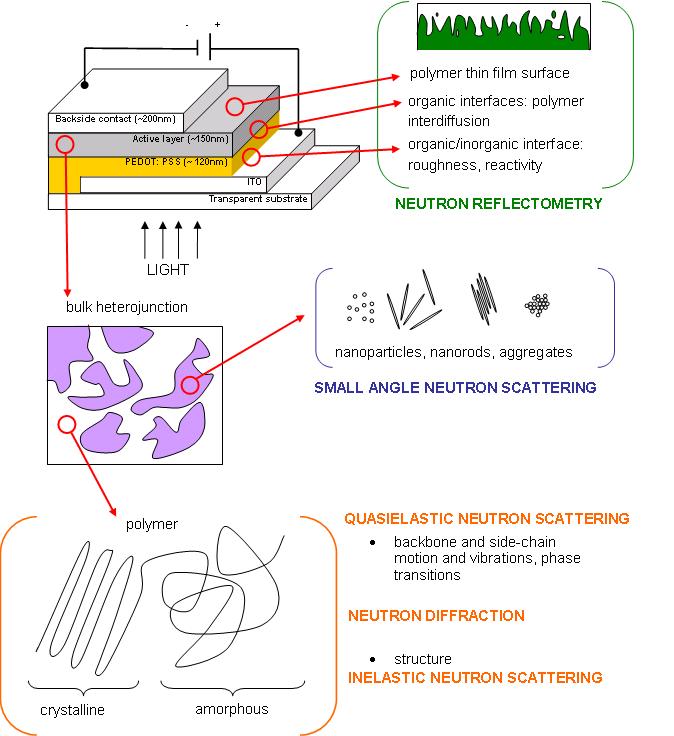The development of the bulk heterojunction approach, which benefits from the use of these polymers in organic light emitting diodes (OLEDs) and solar cells (OSCs), has created great expectations.
Our neutron diffraction and quasielastic scattering (QENS) experiments performed on the OSIRIS backscattering spectrometer are the initial stage of a full measurement program intended to investigate the structure and dynamics of the most widely used conjugated polymers which are the poly-3-alkyl-thiophenes. The added functional groups along the conducting backbone provide solubility and therefore processability of the polymers. Nevertheless, their structure has to be controlled and their dynamics understood in order to avoid the reduction of the carrier mobility.
We have demonstrated the coexistence of amorphous and crystalline phases, determined their melting and crystallization temperatures and provided evidence of a low temperature glass transition. This information, characterisation of the structure and dynamics at the nanoscale is crucial to achieve the production of production of higher performance organic solar cells.

Draft of an organic solar cell showing where neutron scattering experiments can improve our understanding of the device structure.
A Urbina, J Padilla (University of Cartagena), F Batallan, C Díaz-Paniagua (ICMM-CSIC), V García Sakai (ISIS)
Research date: March 2009
Further Information
A Urbina et al., Physical Review B, 78, 045420(5), (2008).
